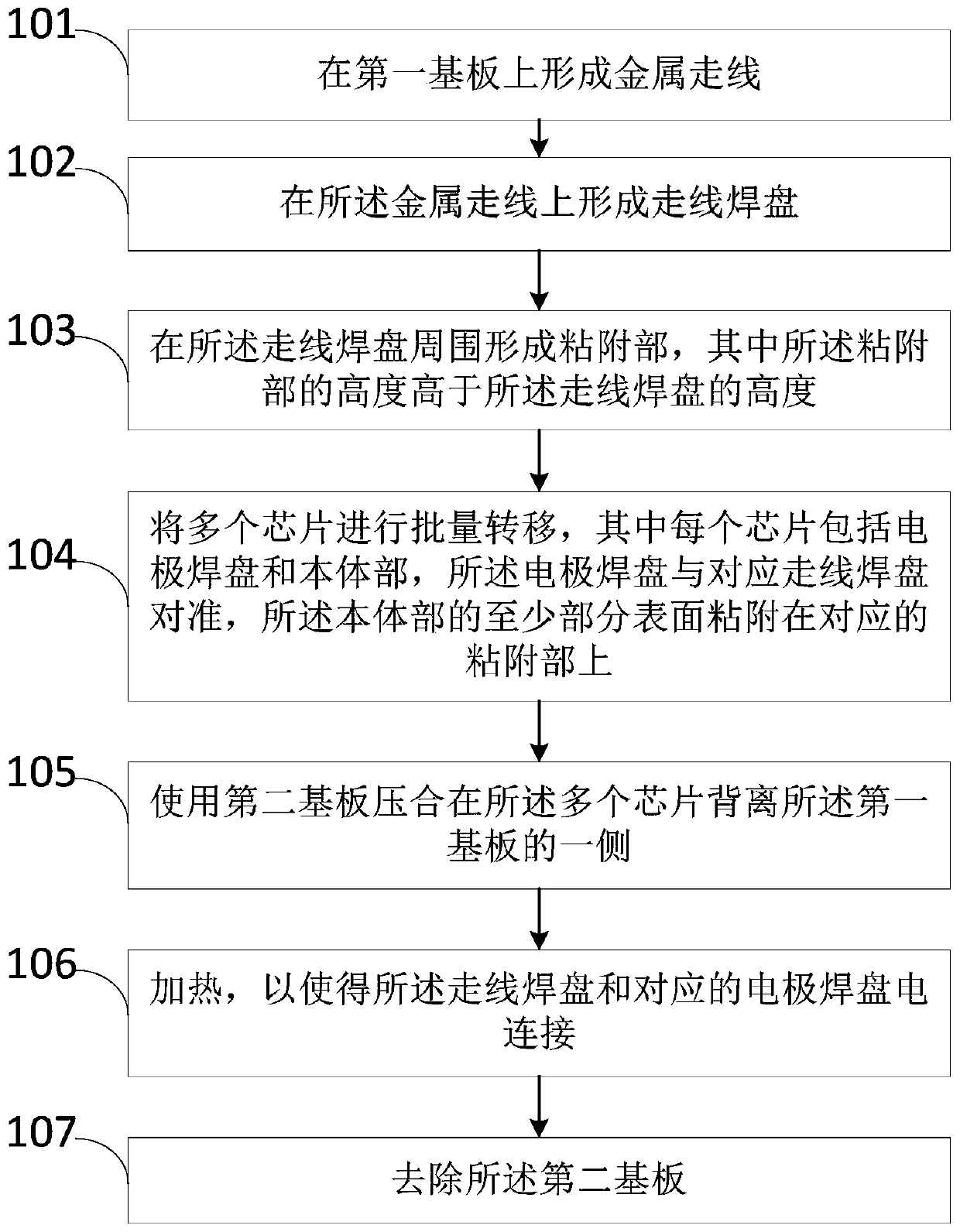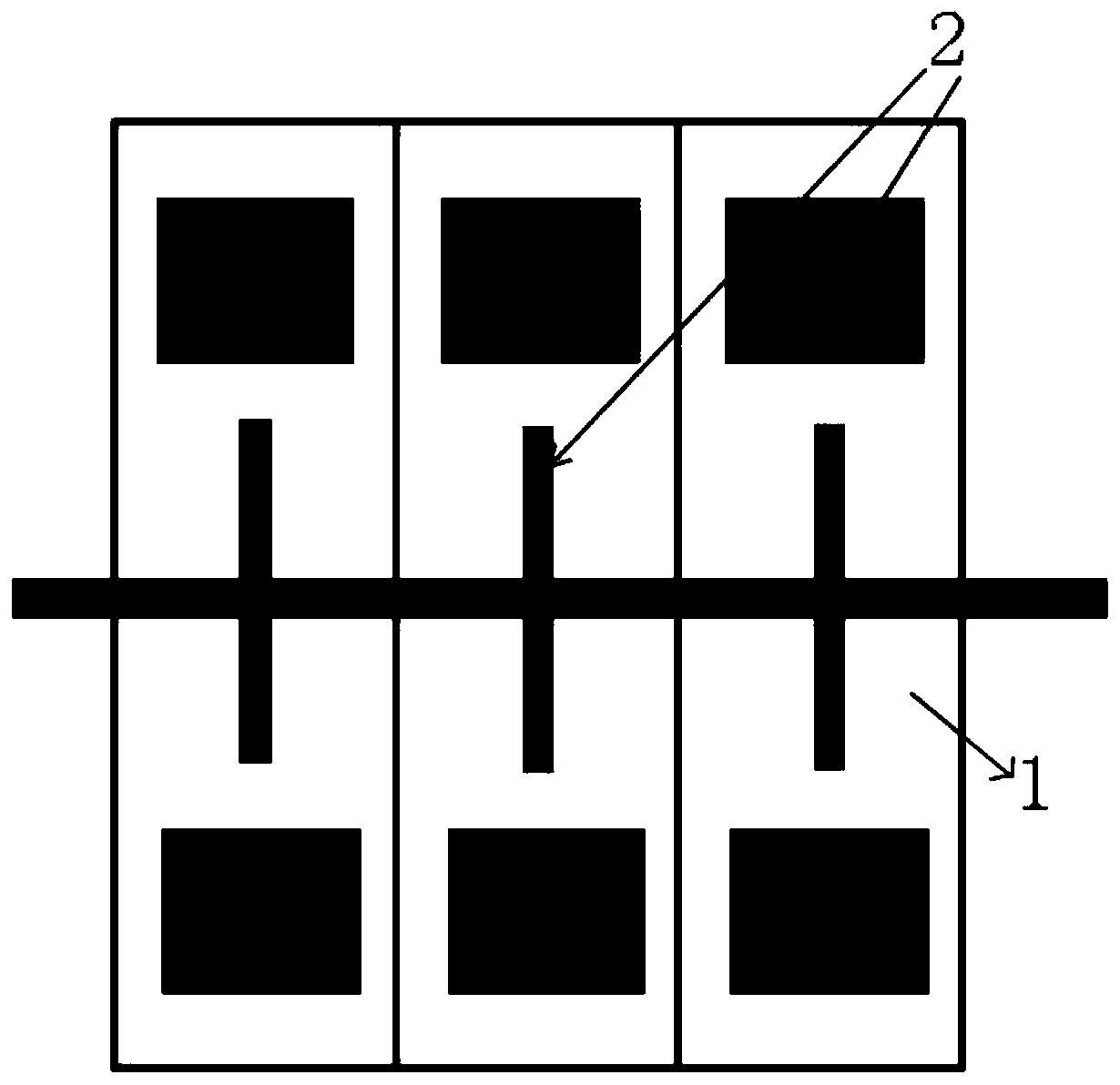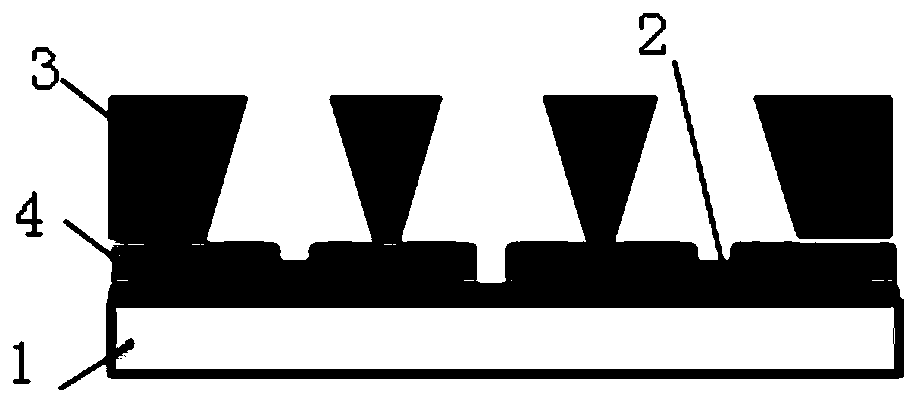Chip transfer method and semiconductor device
A chip transfer and chip technology, applied in the direction of semiconductor devices, semiconductor/solid-state device manufacturing, electric solid-state devices, etc., can solve the problems of reducing the life of the adapter, affecting the accuracy of the adapter, and low production efficiency, so as to reduce the technical threshold and cost, improve transfer yield, simple design effect
- Summary
- Abstract
- Description
- Claims
- Application Information
AI Technical Summary
Problems solved by technology
Method used
Image
Examples
Embodiment Construction
[0056]In order to illustrate the present invention more clearly, the present invention will be further described below in conjunction with preferred embodiments and accompanying drawings. Similar parts in the figures are denoted by the same reference numerals. Those skilled in the art should understand that the content specifically described below is illustrative rather than restrictive, and should not limit the protection scope of the present invention.
[0057] figure 1 A flow chart showing a chip transfer method proposed by an embodiment of the present invention, such as figure 1 As shown, the method includes the following steps:
[0058] S101, forming metal wiring on the first substrate;
[0059] S102, forming a wiring pad on the metal wiring;
[0060] S103, forming an adhesion part around the wiring pad, wherein the height of the adhesion part is higher than the height of the wiring pad;
[0061] S104. Transfer a plurality of chips in batches, wherein each chip inclu...
PUM
 Login to View More
Login to View More Abstract
Description
Claims
Application Information
 Login to View More
Login to View More - R&D
- Intellectual Property
- Life Sciences
- Materials
- Tech Scout
- Unparalleled Data Quality
- Higher Quality Content
- 60% Fewer Hallucinations
Browse by: Latest US Patents, China's latest patents, Technical Efficacy Thesaurus, Application Domain, Technology Topic, Popular Technical Reports.
© 2025 PatSnap. All rights reserved.Legal|Privacy policy|Modern Slavery Act Transparency Statement|Sitemap|About US| Contact US: help@patsnap.com



